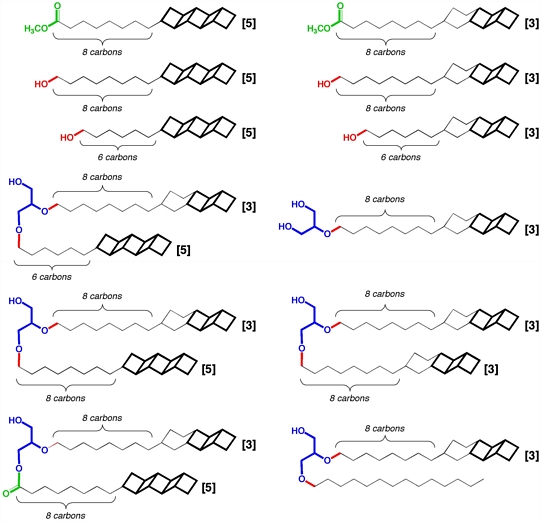
Ladderanes are hydrocarbons consisting of two or more fused cyclobutane rings. These molecules and their derivatives are of fundamental interest to physical organic chemists due to their strain and electronic properties. Much to the surprise of the chemical and biological communities, it was recently reported that a wide variety of ladderane lipids (above; ladderane substructures are bold, lipid headgroups are blue, red, and green) can be isolated from ammonium oxidizing bacteria living approximately 90 m below the surface of the Black Sea. That such highly strained polycyclic molecules are biosynthesized by Nature is both unprecedented and startling. The processes by which ladderane lipids are biosynthesized are not known and as of yet no enzymes that produce ladderanes have been characterized. We are using computational methods to assess the viability of several possible processes for biosynthesizing these concatenated cyclobutanes.
Nouri, D. H.; Tantillo, D. J. Curr. Org. Chem. in press: "They Came from the Deep: Syntheses, Applications, and Biology of Ladderanes"
